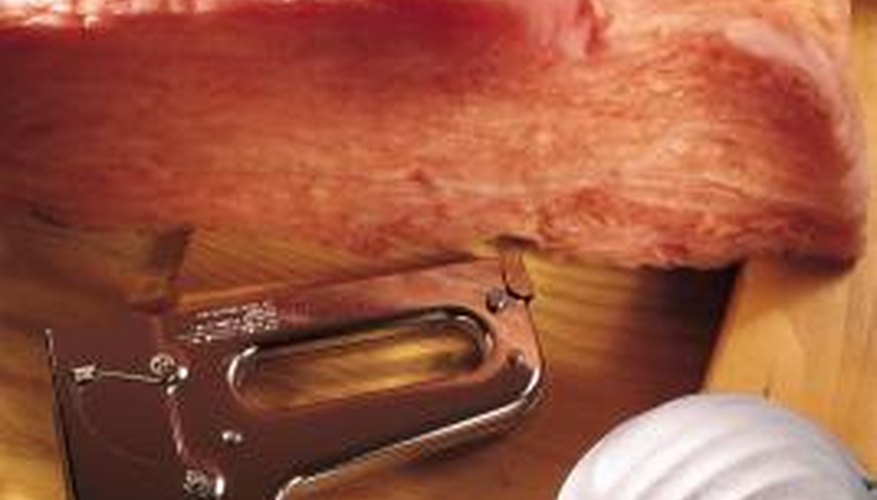Loose fill vermiculite insulation came to market in the 1950s and was used up until the 1970s. A large percentage of this insulation was mined in Libby, Montana. The mine closed in 1990 when it was discovered that it was contaminated with asbestos that was being extracted along with the vermiculite. An attic with vermiculite loose fill insulation should be tested by a local environmental company for asbestos before disturbing it in any way. Asbestos is most dangerous for the occupants once it is touched and it mixes with the house air.
Have a local environmental company test the insulation for asbestos. If the results are positive, hire a specialised company to remove the insulation; do not remove it yourself.
- Loose fill vermiculite insulation came to market in the 1950s and was used up until the 1970s.
- Have a local environmental company test the insulation for asbestos.
Put on a respirator and gloves to protect yourself from the dust generated by disturbing the insulation.
Open a plastic garbage bag and move the insulation into it with the hand scoop. Work your way around the attic removing as much as possible using this technique. Do not touch any wires that may run through the attic space.
Turn on the wet/dry vacuum and suck up any remaining insulation between the ceiling joists using the vacuum's hose.
Contact your local municipal dump to inquire about proper disposal of asbestos-free vermiculite insulation.
WARNING
Only touch and remove vermiculite insulation that is not contaminated with asbestos. If it does have asbestos, a specialised environmental company with experience in this task must remove it. Do not expose yourself to a potential carcinogen.
